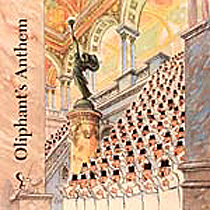Political Cartoons and Oliphant’s Lament
Is it just me, or have political cartoons lost their punch? One would expect that in our visually rich society we would be awash in popular cartooning. Animation is everywhere, to be sure, but political cartooning – or “editorial cartooning” as the professionals call it, does not seem as relevant.
It could be that shrinking influence of newspapers has undermined the access of political cartoon. The rise of corporate culture, too, has been cited as a corresponding deterrent to stinging political cartoons. But other factors are at play.
It was not always such. From Thomas Nast’s Tammany Tiger to Pat Oliphant’s caricatured Nixon, talented political cartoonists have been able to reduce complex political situations into easily recognized images. When they get it right, their visuals are widely copied and repeated. Yet in 2013 there has been no viral cartoon and no one image that sums up last year’s presidential election.
After reading Oliphant’s Anthem, a companion book and website to the Library of Congress’s 1998 exhibition (note – the website is live and worth a gander), I believe that the underlying cause of the political cartoon’s wane reflects a broader shift in American popular culture. Oliphant, an Australian native who won a Pulitzer way back in 1966, is one of America’s most influential political cartoonists. His work is reproduced nationally and readily available. Along with MaNelly and the late Herblock, the trio were the most influential American political cartoonists of the last 50 years.
Most political cartoons, from the 1800s through the early 2000s, shared a common purpose: to shine a light on hypocrisy, to knock the pompous off their perch, to mock. Politicians are often the target, but not exclusively. Political cartoons’ energy derives from the difference between what is and what is proclaimed. That difference is all the easier to portray if our leaders access and utilize the language and imagery of the ideal, the preferred. The more ambitious the claims of a political leaders, the more energy available for a political cartoons. And ambitious assertions – especially moral testaments – are unusual in our ironic age. When the proud fall, it is far too often medicalized and pathologized. Elliott Spitzer and Anthony Weiner serve as prime examples.
We have come to expect our leaders to cheat, to philander, to obfuscate, and to lie. We have low expectations for presidential candidates a lower expectations for Congress. Without much faith in the system or the people closest to it, we gain little pleasure or insight from the humor of political cartoons. We have been habitually disappointed too often – and there are few professing optimism.
Ironically, we need a little more idealism for political cartooning, with all its dark humor, to gain traction.
David Potash